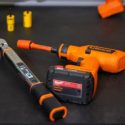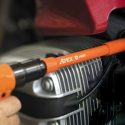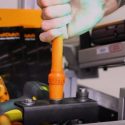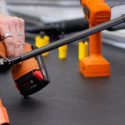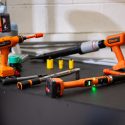Intelligent Assembly Spindles:
The Future of Precision and Efficiency in Manufacturing
In the realm of modern manufacturing, precision and efficiency are paramount. One of the standout innovations driving these advancements is the intelligent assembly spindle. These sophisticated tools are transforming how components are assembled, making processes faster, more accurate, and ultimately more cost-effective.
What Are Assembly Spindles?
An assembly spindle is a servo motor integrated into a manipulator and connected to a controller that is used for accurate, controlled and fast setting of multiple screw joints.
Are intelligent spindles better than traditional spindles?
Intelligent spindles can be described as spindles with the capabilities of sensing, decision making and control, which guarantee the optimum machining process and reliable operations.
Intelligent assembly spindles are equipped with smart technology that enhances their performance. Unlike traditional spindles, which operate based on fixed parameters, intelligent spindles can adapt to real-time conditions, allowing for greater flexibility and precision in assembly operations.
These spindles often incorporate sensors, data analytics, and connectivity features, enabling them to monitor and optimize their performance. This adaptability is key in industries ranging from automotive to electronics, where the need for precision is critical.

What are the benefits of using intelligent spindles?
Intelligent spindles significantly enhance production efficiency in manufacturing through several key mechanisms:
Increased productivity | Intelligent spindles can operate at high speeds while maintaining precision, which increases the throughput of manufacturing processes. This means more components can be produced in less time without compromising quality.
Improved Quality Control | The precision and real-time adjustments offered by intelligent spindles ensure that components are machined to exact specifications. This high level of accuracy reduces the rate of defects and rework, leading to higher overall product quality.
Enhanced Flexibility | These spindles can adapt to different machining tasks and conditions in real-time, providing greater flexibility in the production process. This adaptability is crucial for handling various components and materials efficiently.
Reduced Downtime | By continuously monitoring their own condition and predicting maintenance needs, intelligent spindles help prevent unexpected breakdowns. This predictive maintenance reduces downtime and keeps the production line running smoothly.
Data-Driven Insights | This is where the intelligence really plays its part as these spindles can dynamically adjust operational parameters based on real-time data to maintain optimal performance.
Energy Efficiency | Intelligent spindles optimize their energy consumption based on the machining requirements, which helps in reducing overall energy usage and costs.
By leveraging these capabilities, intelligent spindles contribute to a more efficient, reliable, and flexible manufacturing process, ultimately leading to cost savings and higher productivity in the automotive industry.
How do you Daisy Chain spindles?
A daisy chain formation allows multiple spindles to be connected in series using a single cable and one controller. This setup simplifies the wiring, reduces the complexity of the system and lowers the overall cost of ownership.

Here are some key benefits of daisy chain spindles:
1. Reduced System Complexity
By using daisy-chain connectors, the need for multiple cables is eliminated, which simplifies the overall system design
2. Efficient Cable Management
With fewer cables, managing and organizing the wiring becomes much easier, leading to a cleaner and more efficient workspace
3. Smaller Payload Capacity
The reduced number of cables also means that the system can handle smaller payloads, which is beneficial in applications where space and weight are critical factors
4. Flexibility and Scalability
Daisy chain spindles can be easily added or removed from the system, providing flexibility and scalability for different manufacturing needs
5. Integrated Diagnostics
These spindles often come with on-board diagnostics to monitor their performance and ensure optimal operation.
Conclusion
Overall, daisy chain spindles are an efficient solution for modern manufacturing environments, offering streamlined connectivity and enhanced performance.




